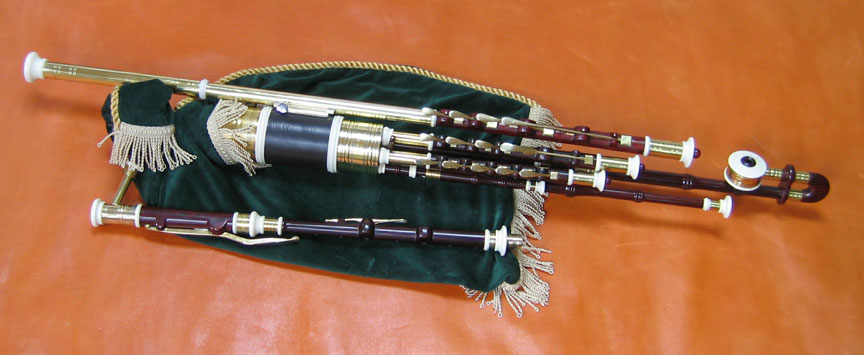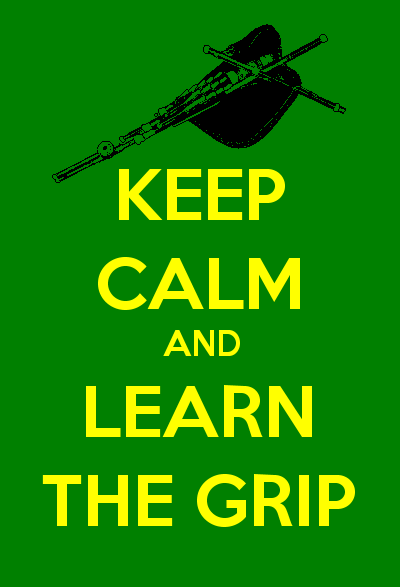
About the Pipes
The uilleann (pronounced ILL-en) pipes are the traditional bagpipes of Ireland. Originally (and sometimes still) called the "union pipes," they developed through the 18th century, finally reaching their current form in the first half of the 19th century. The first tutor book and tune collection for the union pipes was published about 1800.
The uilleann pipes are much quieter than the more universally familiar Scottish Highland bagpipes. They can be thought of as a more "social" instrument: the Irish pipes are right at home in a pub or living room, playing tunes alongside fiddles and flutes. Numerous traditional Irish music groups have included the uilleann pipes, some of the best-known being the Chieftains, The Bothy Band, Planxty, and Lunasa. Many pop and rock musicians have used the pipes as well, such as Don Henley, Van Morrison, Kate Bush, Depeche Mode, Nightwish, Mike Oldfield, and Enya. In the mid-1990s, the pipes were brought to new levels of worldwide popularity when they were prominently featured in the Riverdance show. They have been heard in numerous film & television soundtracks, such as Braveheart, Titanic, and even the recent Battlestar Galactica!

The modern name ("uilleann") for the pipes comes from the Irish word for "elbow" - indeed the instrument is powered by a bellows strapped under the right elbow, which pumps air into the bag which is squeezed by the left elbow. The uilleann pipes chanter is among the most musically advanced in the world of bagpipes. It is designed to overblow for a full 2 octave range, where most other pipes play a single octave, or overblow just a few notes. In order to achieve this, the chanter reed has to be scraped quite thin, which means it's very sensitive to changes in air temperature and humidity, perhaps notoriously so. We're fortunate on Vancouver Island to have a climate that's relatively friendly to the pipes and reeds.
The uilleann pipes have 3 drones tuned octaves apart, to provide a harmonic base for the melody of the chanter. Finally, the regulators are another feature that sets the uilleann pipes apart from all others. The regulators (normally 3 on a full set) are keyed pipes which lay on top of the drones across the player's lap. The keys are played with the side of the right hand and wrist, to provide a chordal accompaniment to the melody. They can be used rhythmically on (or off) the beats, or in a smoother, sparser style. One of the things that's so appealing about Irish piping is that there really aren't any rules: each player is free and indeed encouraged to make their own choices and develop their own style of playing.
Learning to play the uilleann pipes is a long process, and requires commitment and dedication, maybe even obsession. Most beginners start out on a "practice set," which is made up of just the chanter, bag and bellows. This is plenty for the first while, as the player learns to control the bag and bellows to give a steady supply of air to the pipes. The "half set" is the next stage, when the mainstock and drones are added. Finally, the full set includes the regulators. (Many pipers have enough sense to avoid this stage altogether!)
 "You know, there's an awful lot to be said for this Irish traditional folk music and folklore, because first of all you have to learn it, and first you must learn the Talk, and then you must learn the Grip, and after that you must learn the Truckly-How, and then you have the whole lot, only just to keep on practising it."
"You know, there's an awful lot to be said for this Irish traditional folk music and folklore, because first of all you have to learn it, and first you must learn the Talk, and then you must learn the Grip, and after that you must learn the Truckly-How, and then you have the whole lot, only just to keep on practising it."
-- Seamus Ennis
last updated July 2012